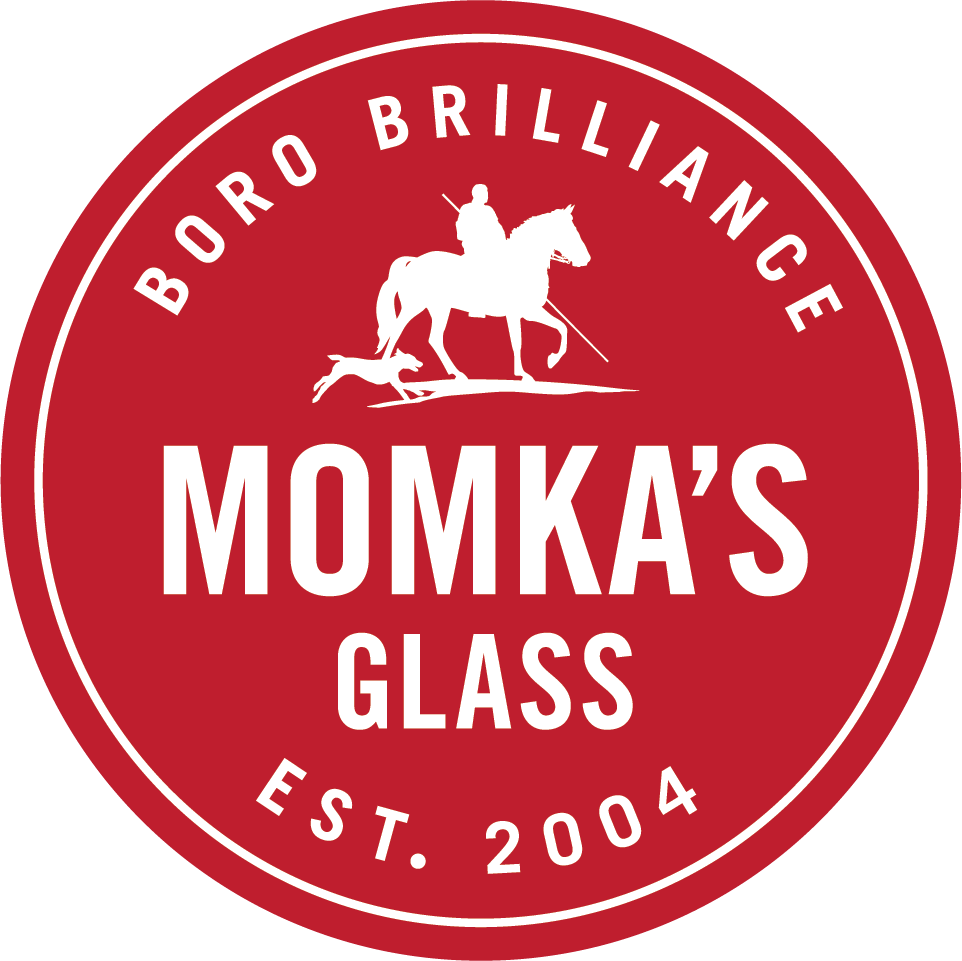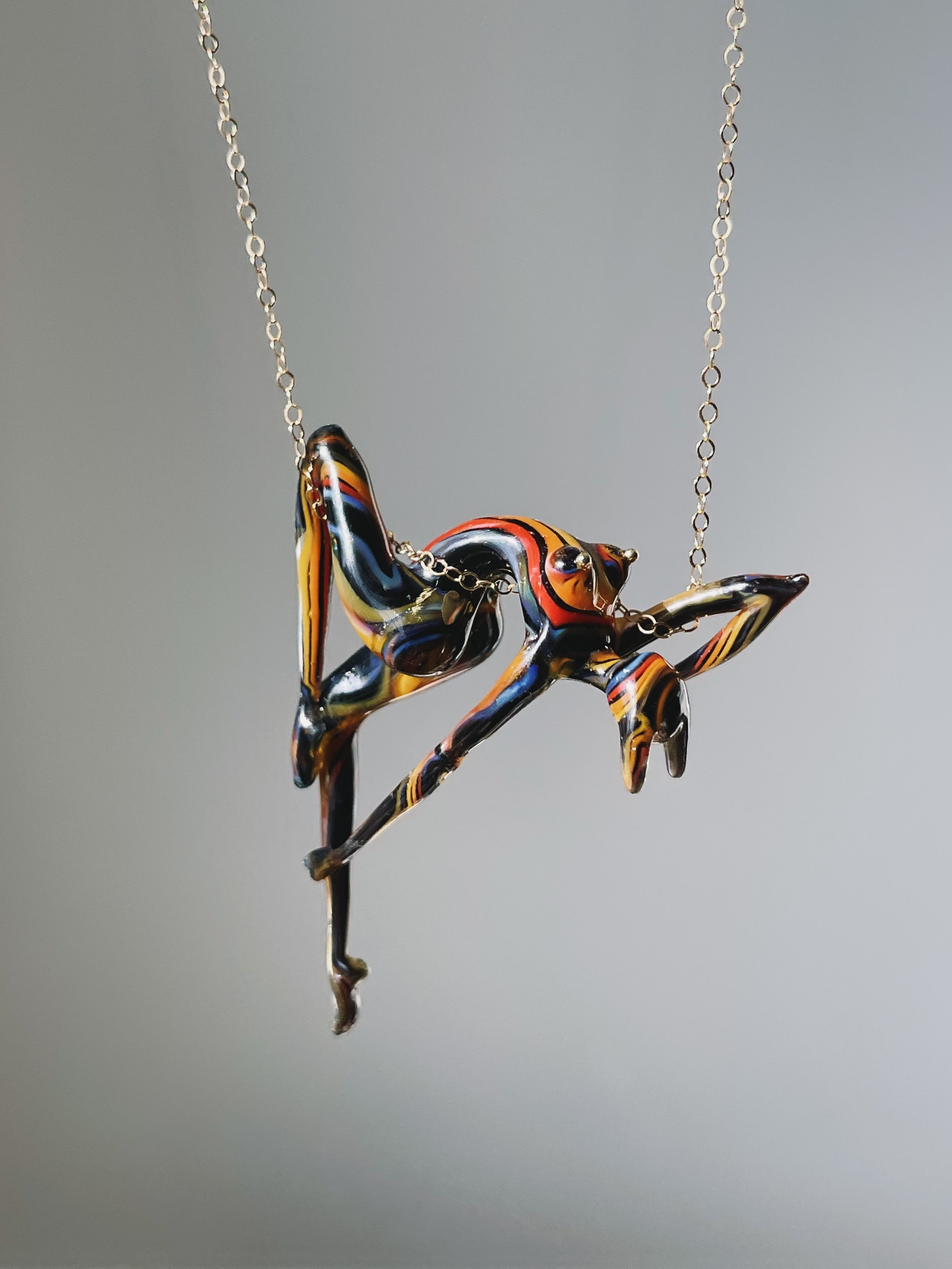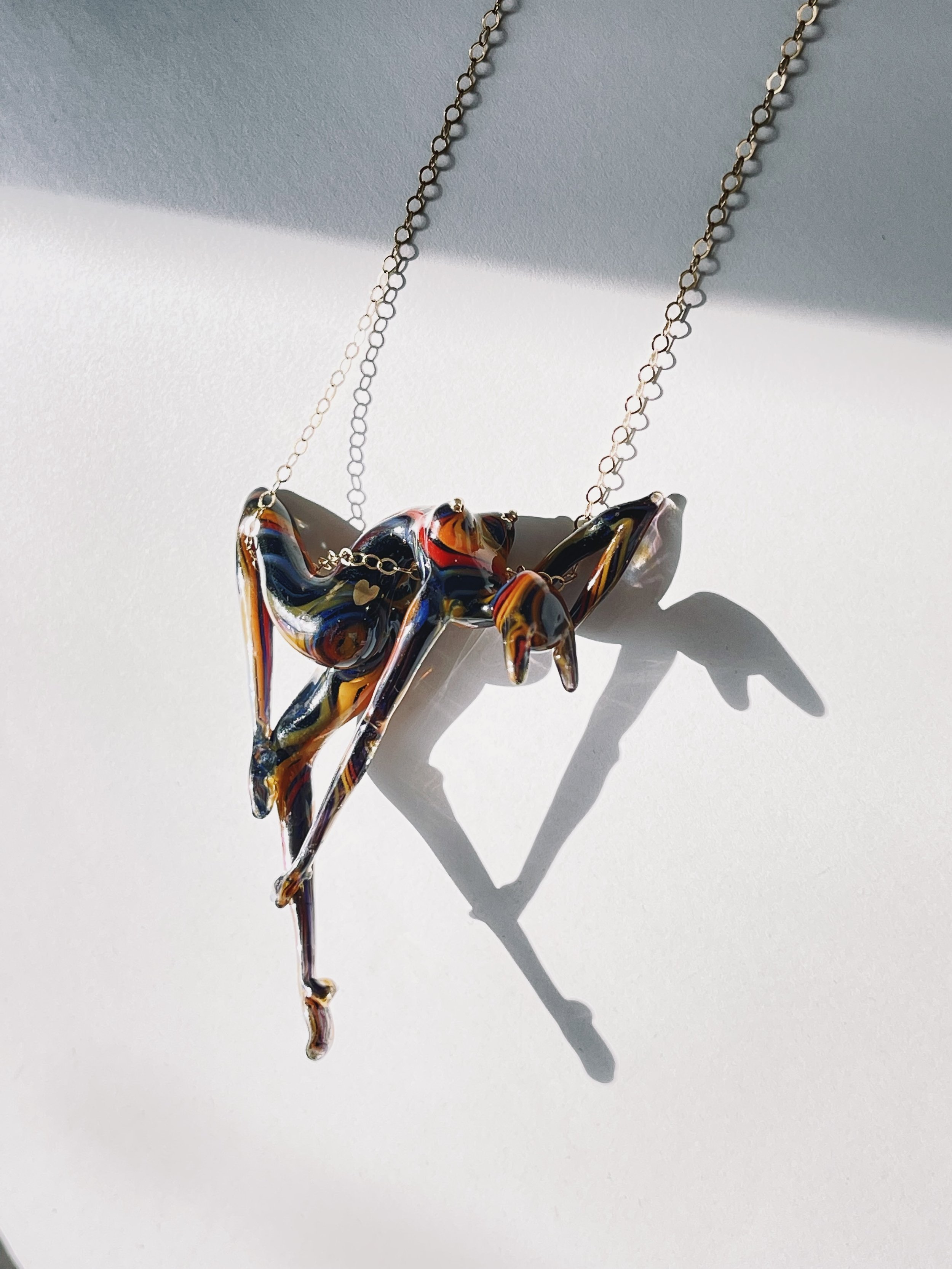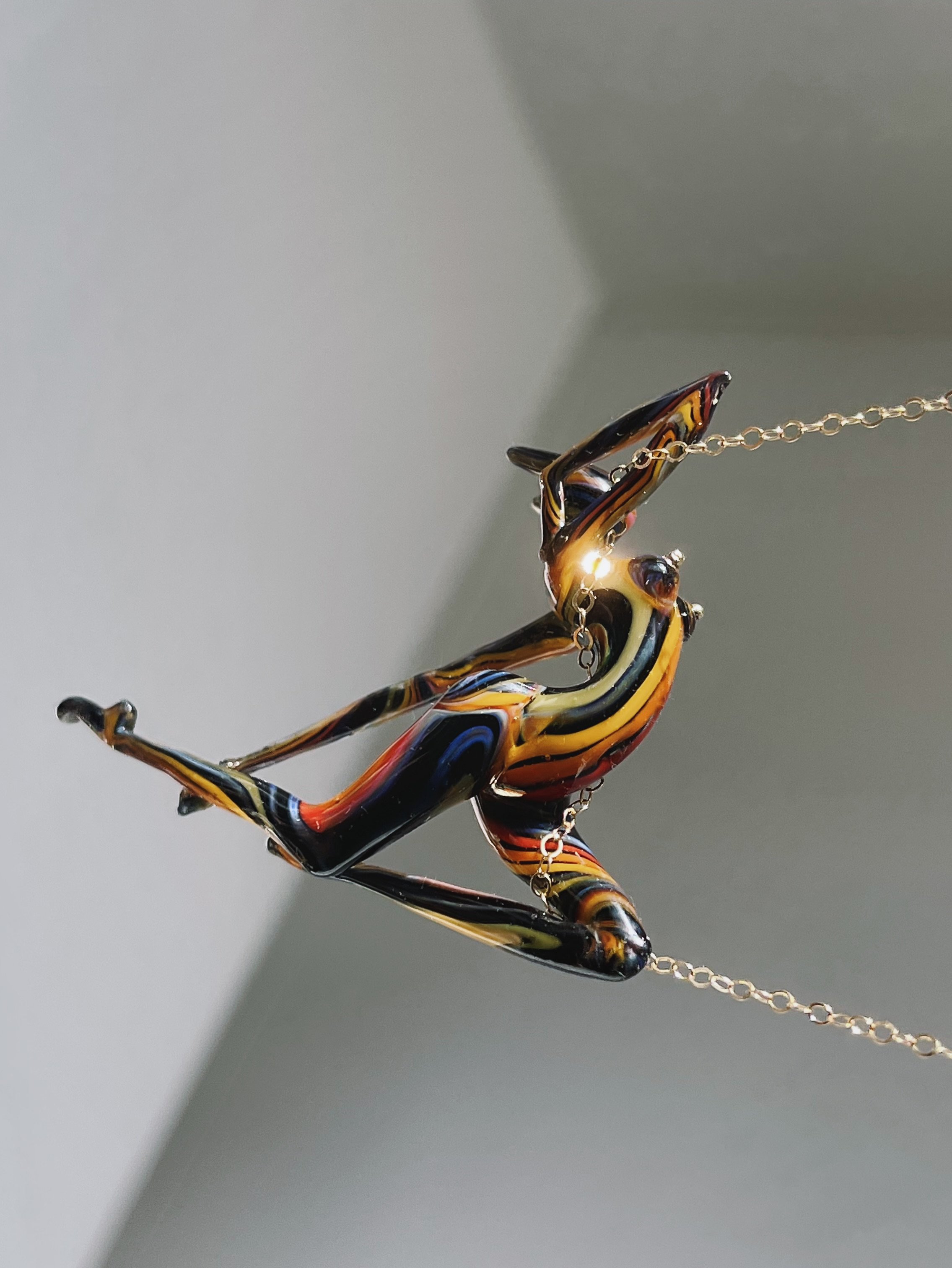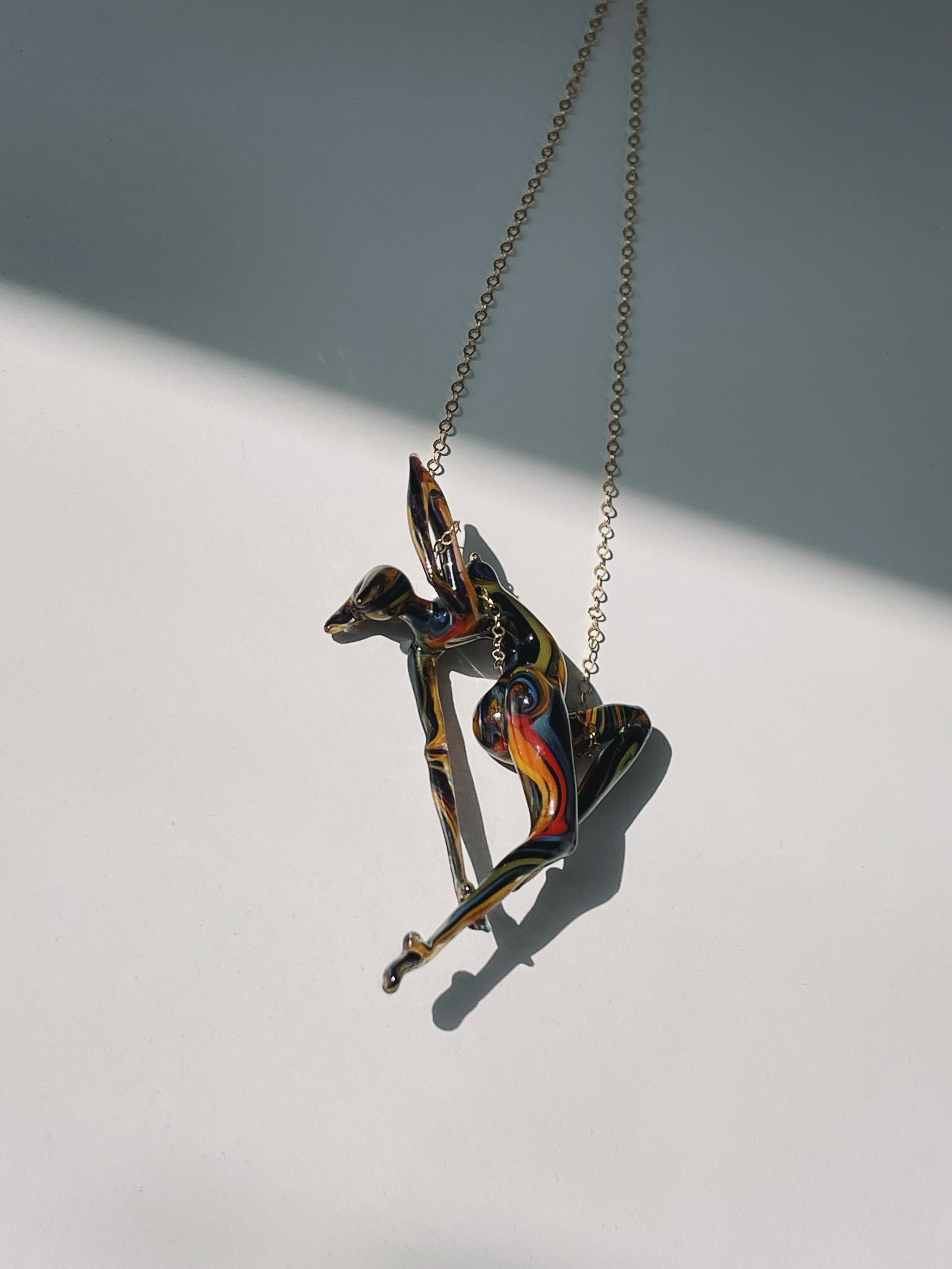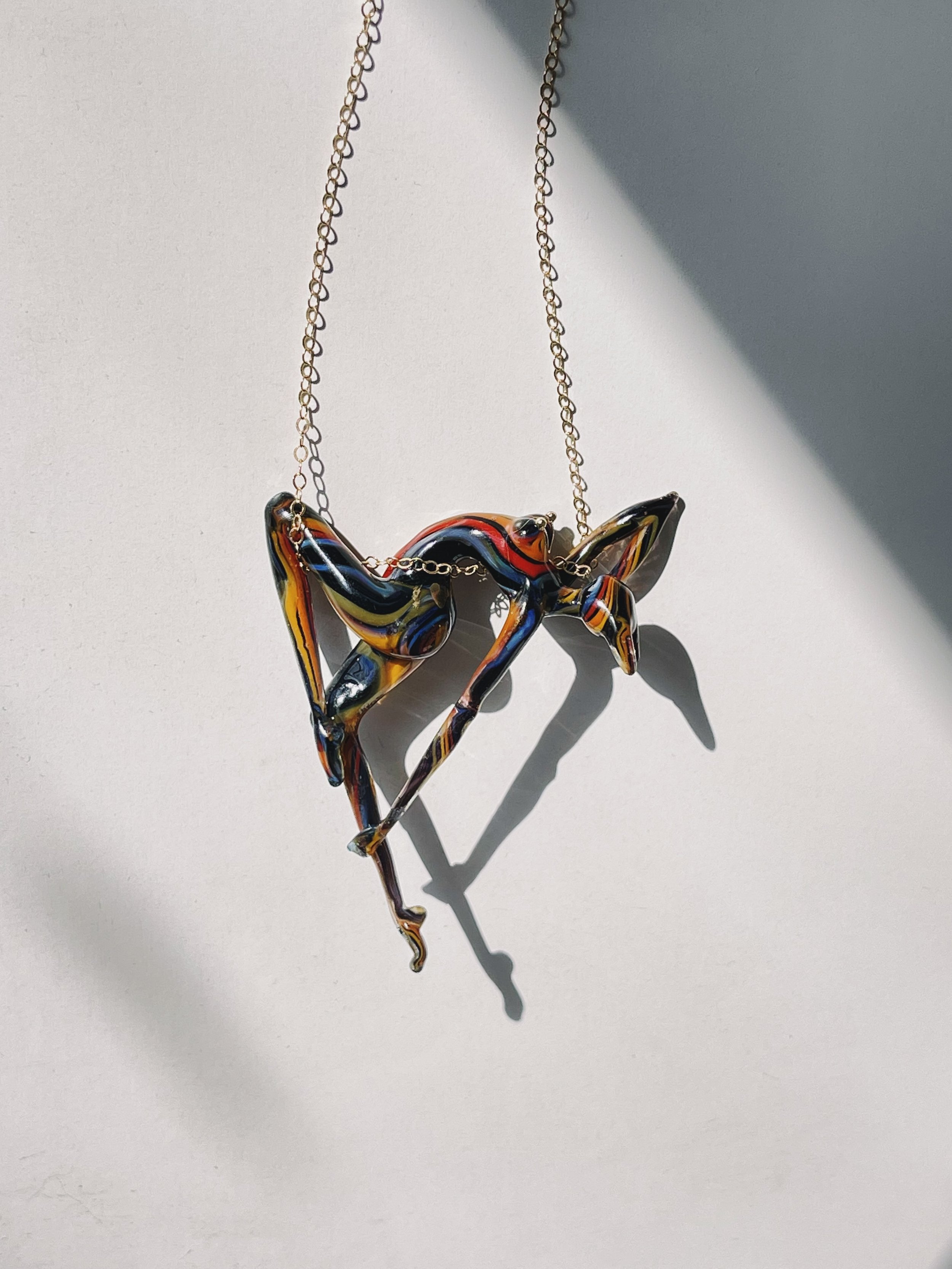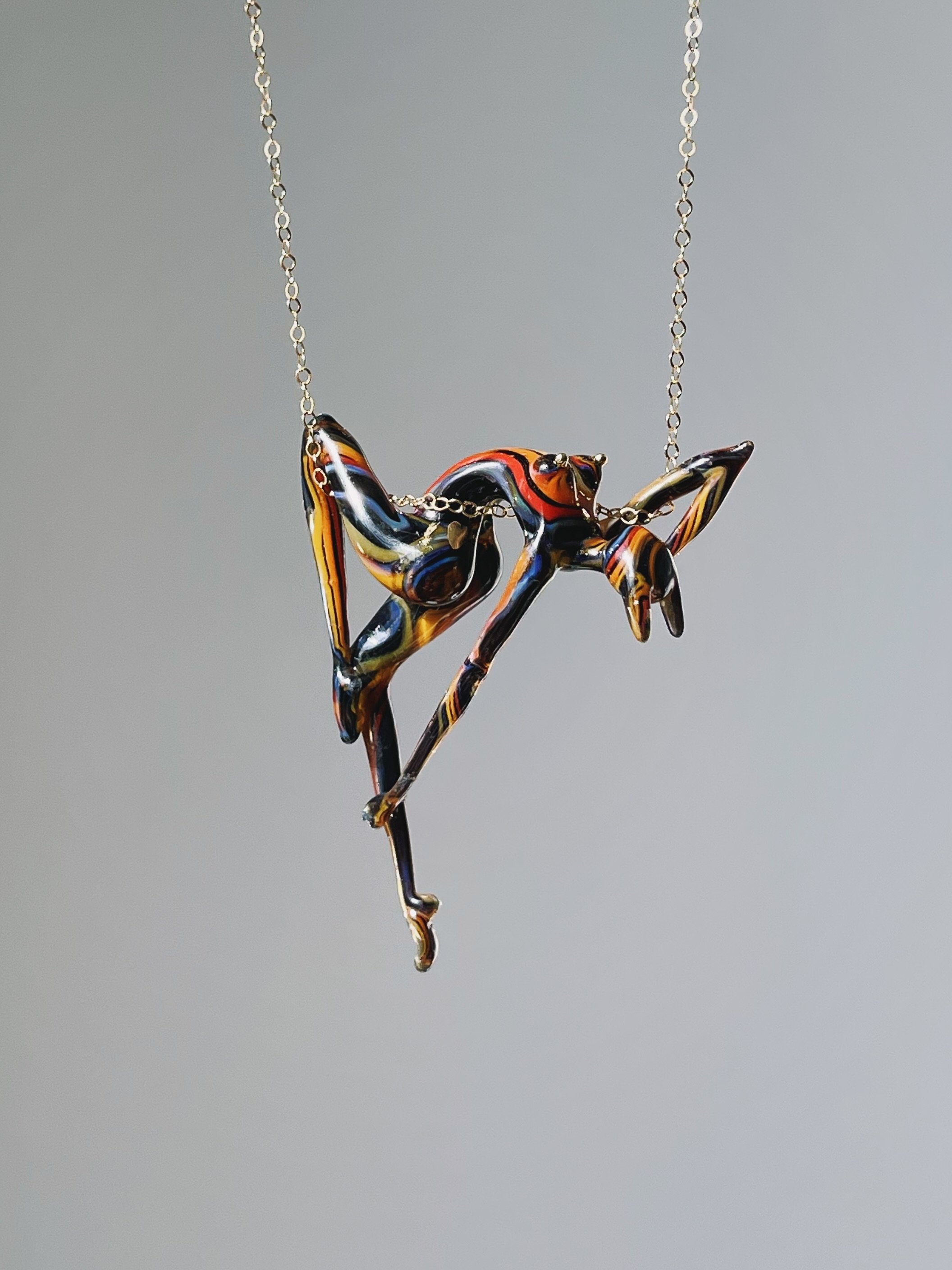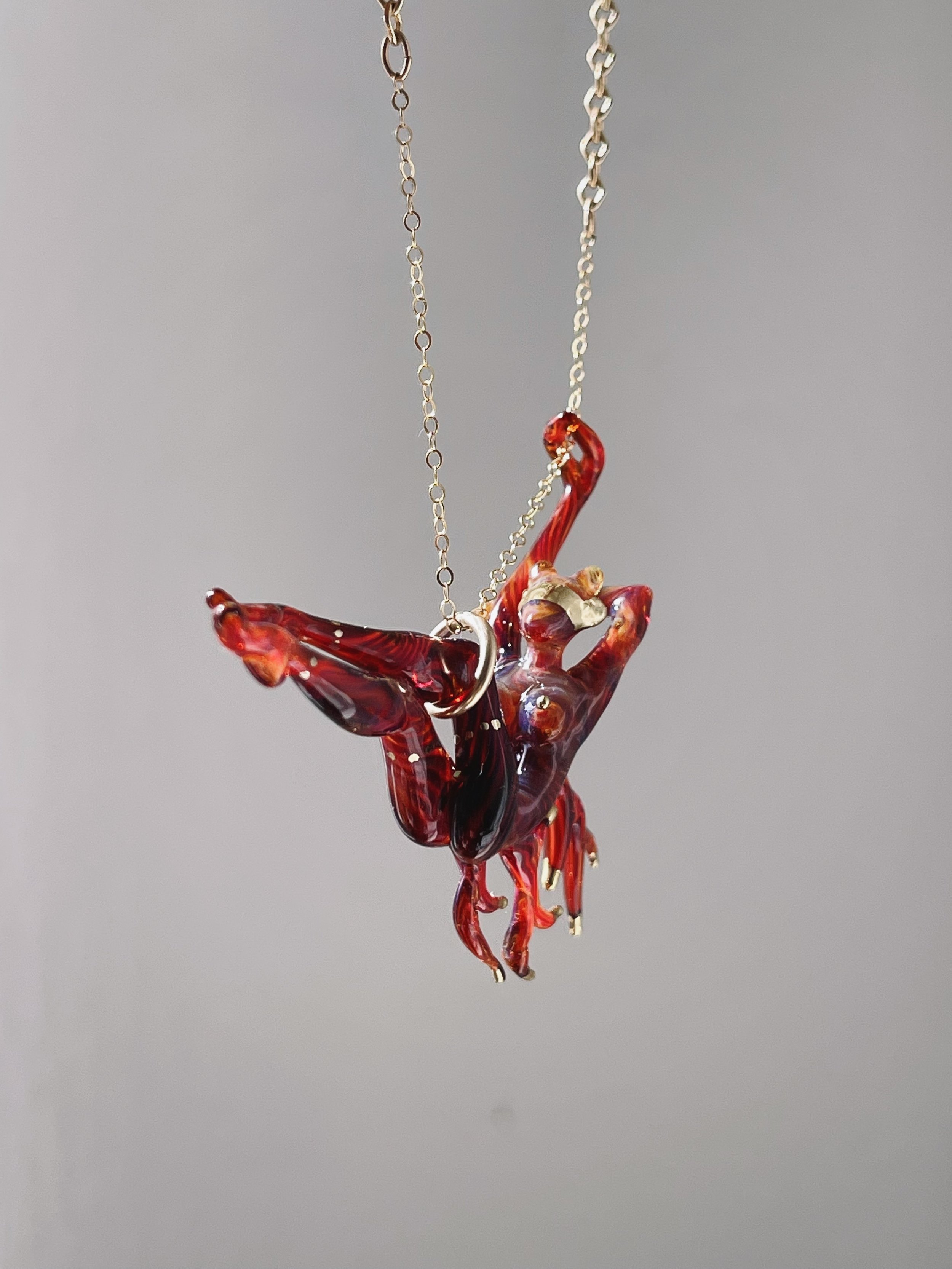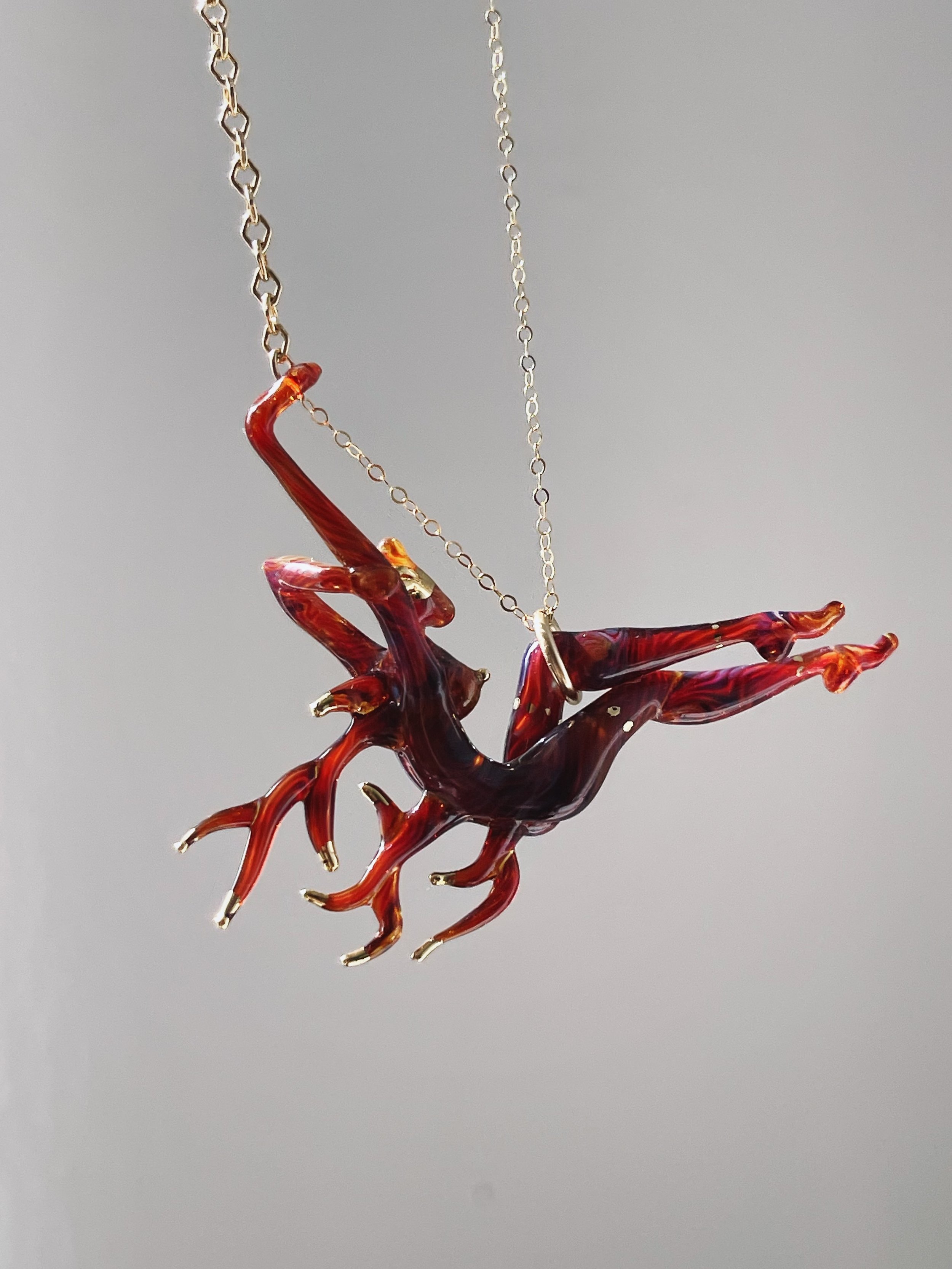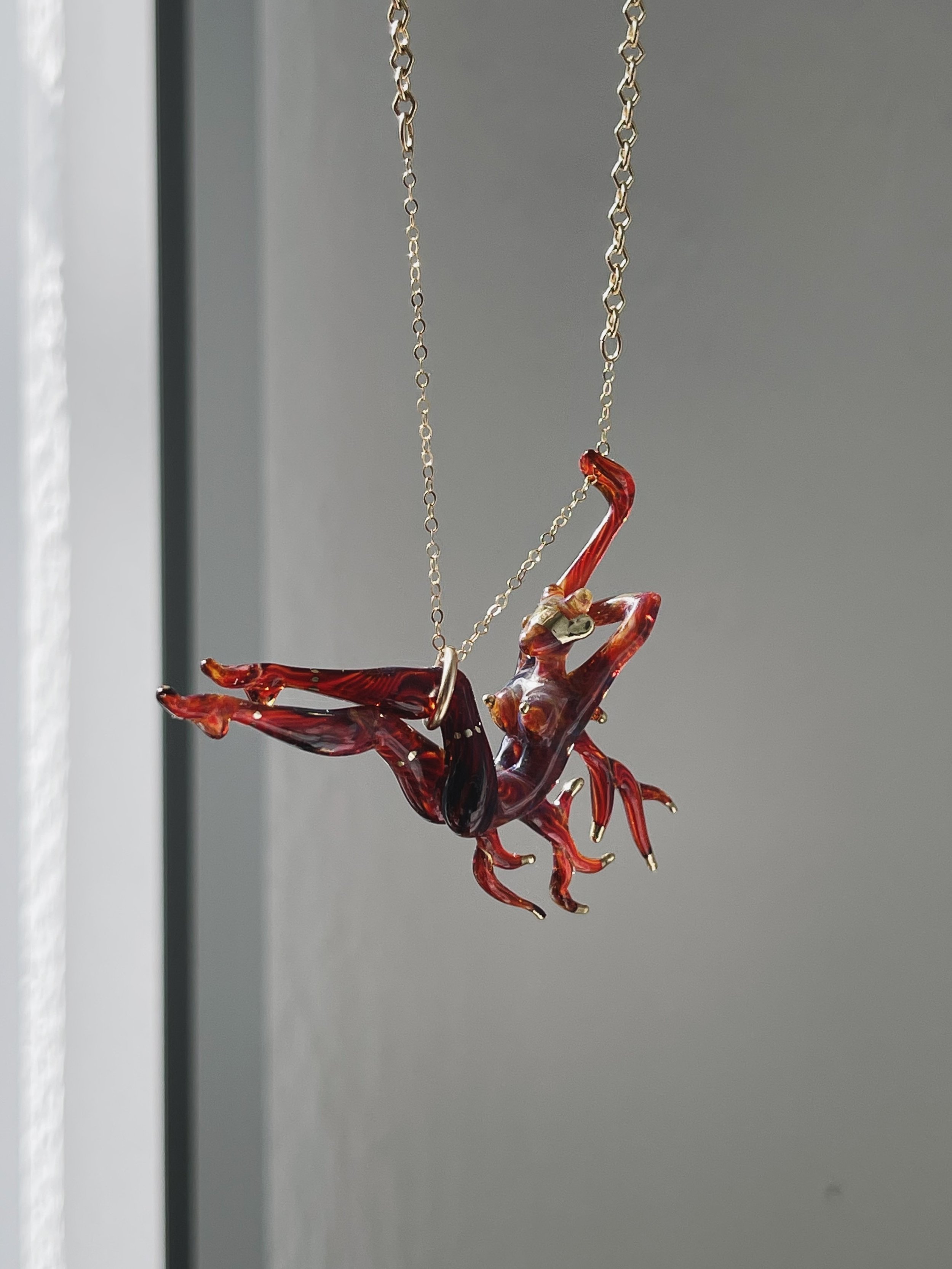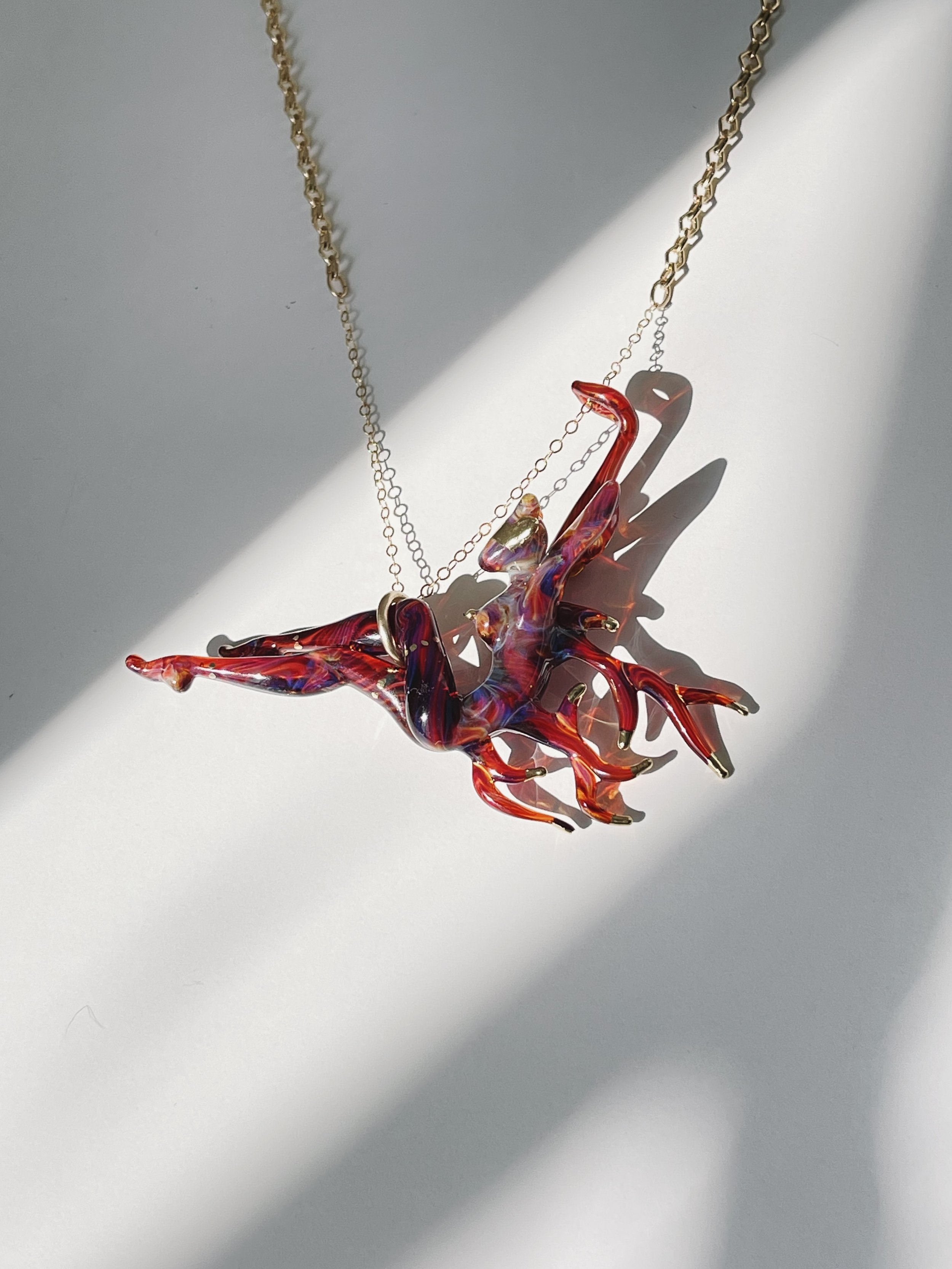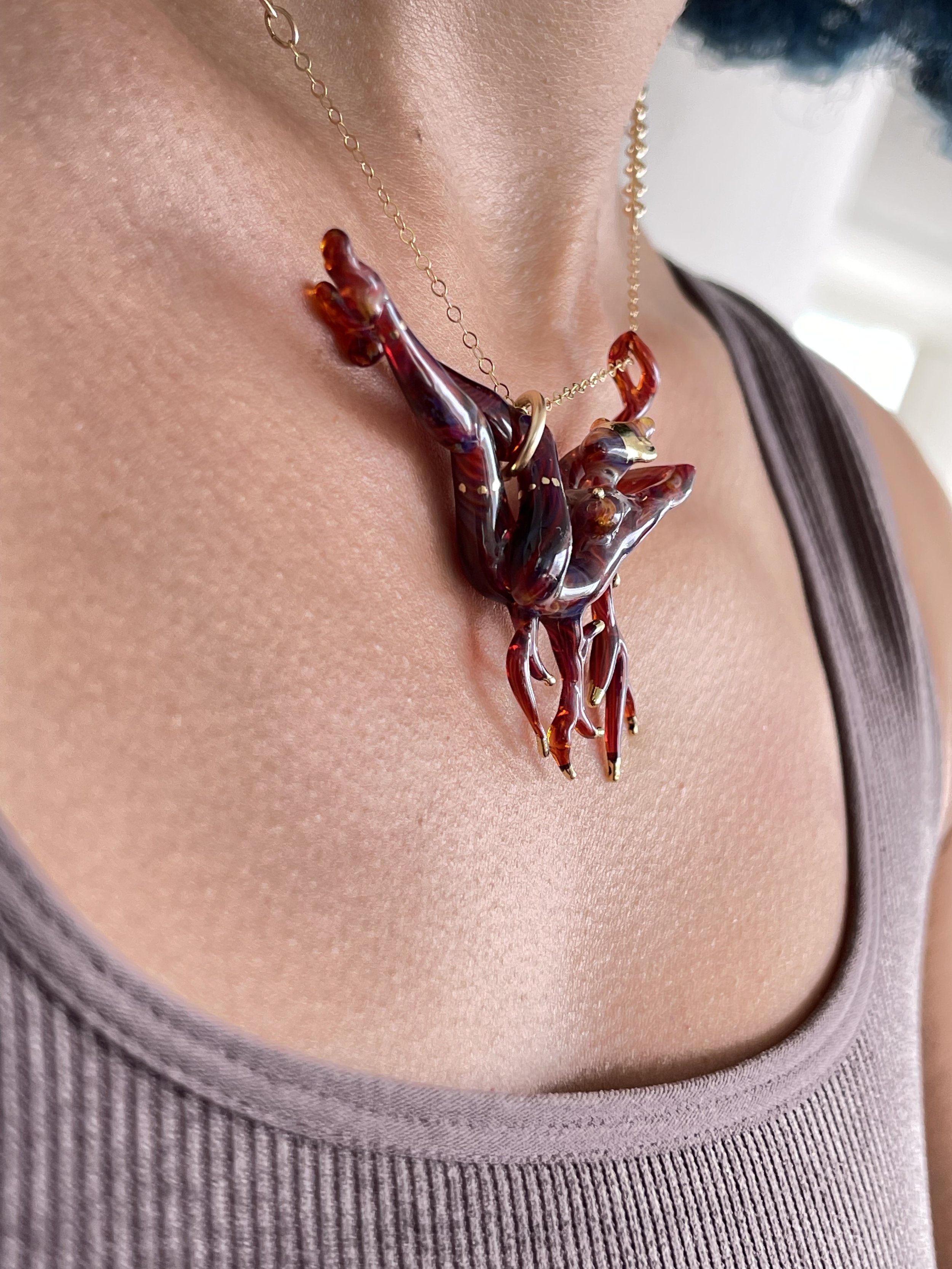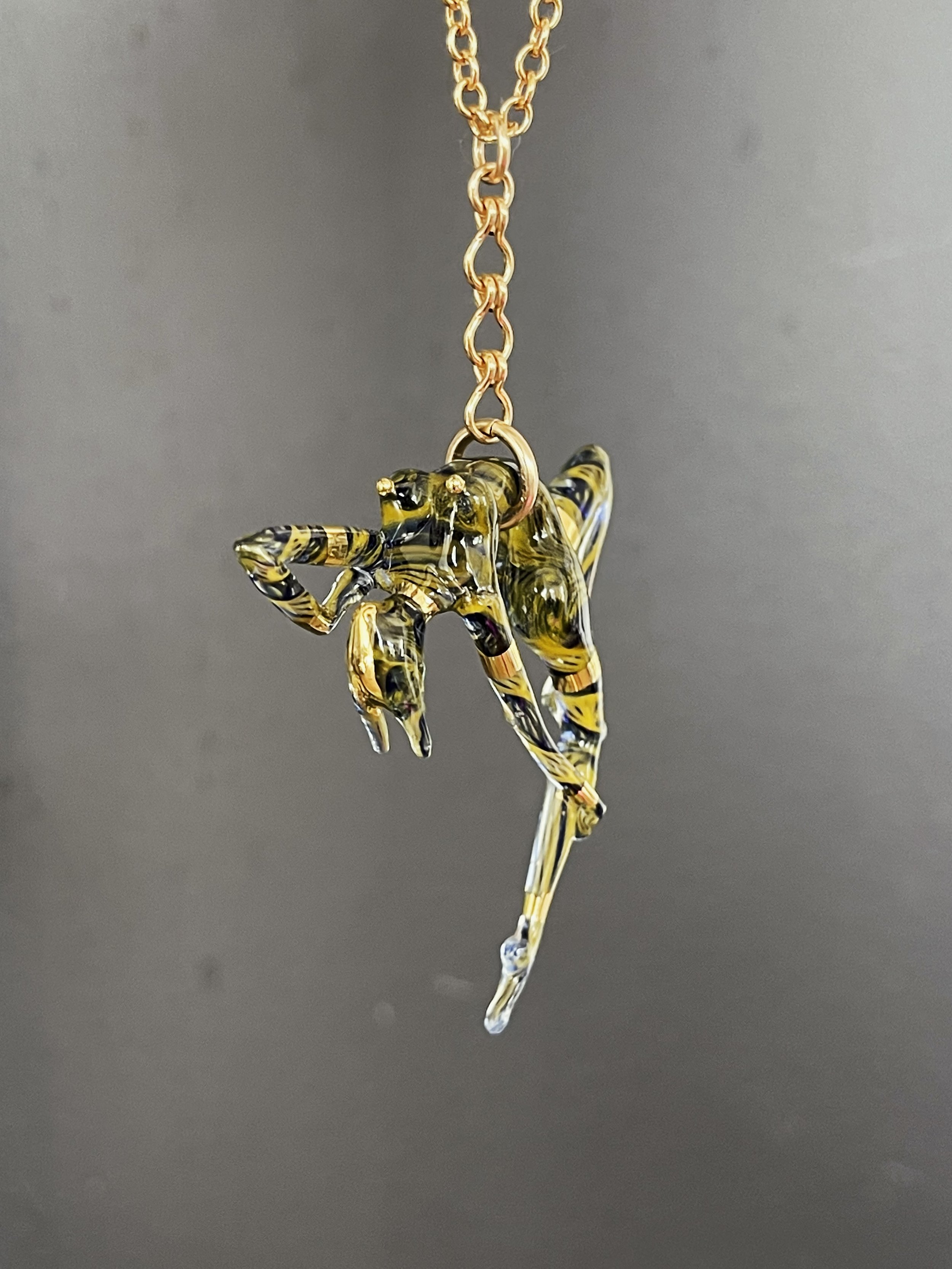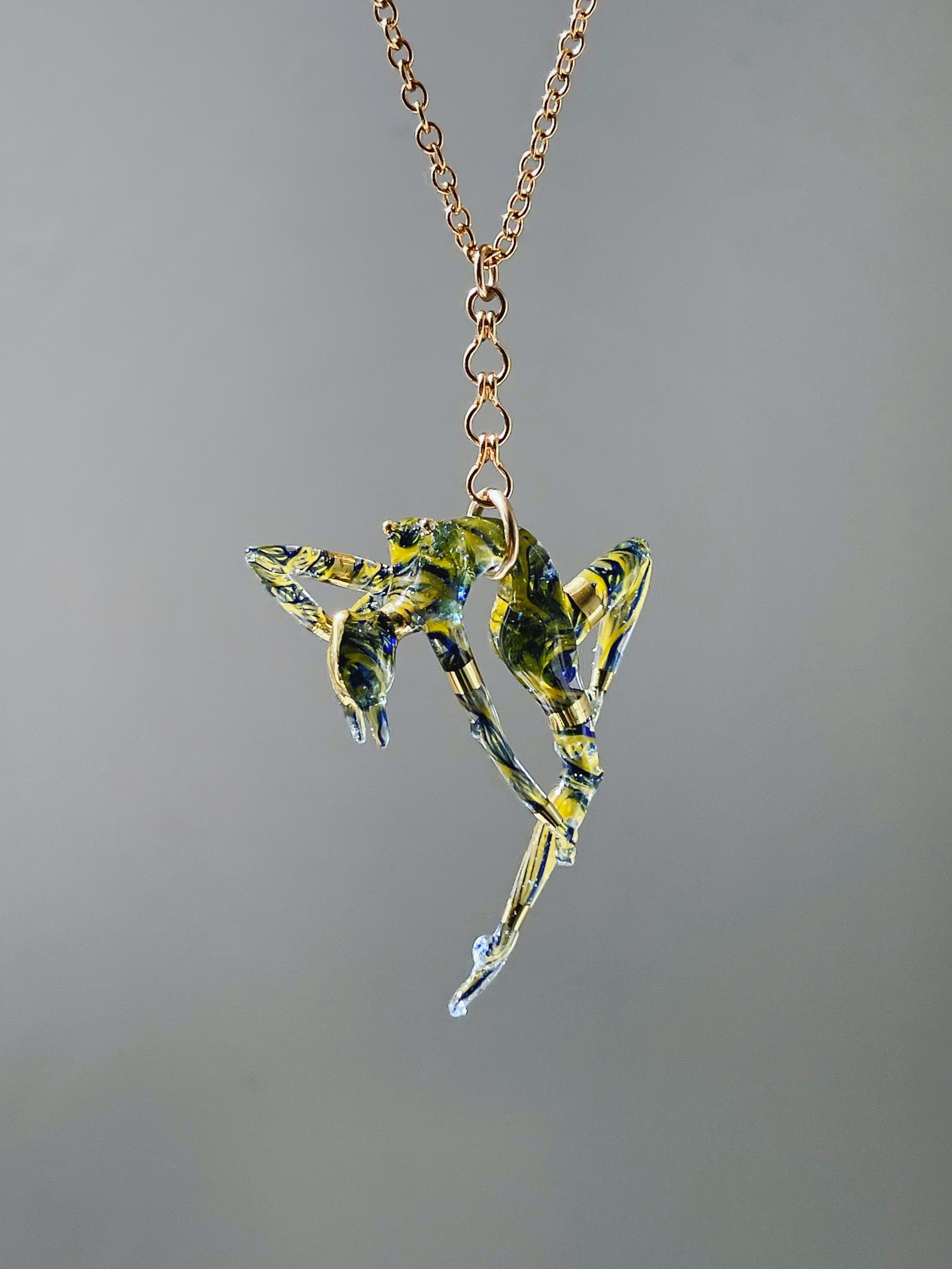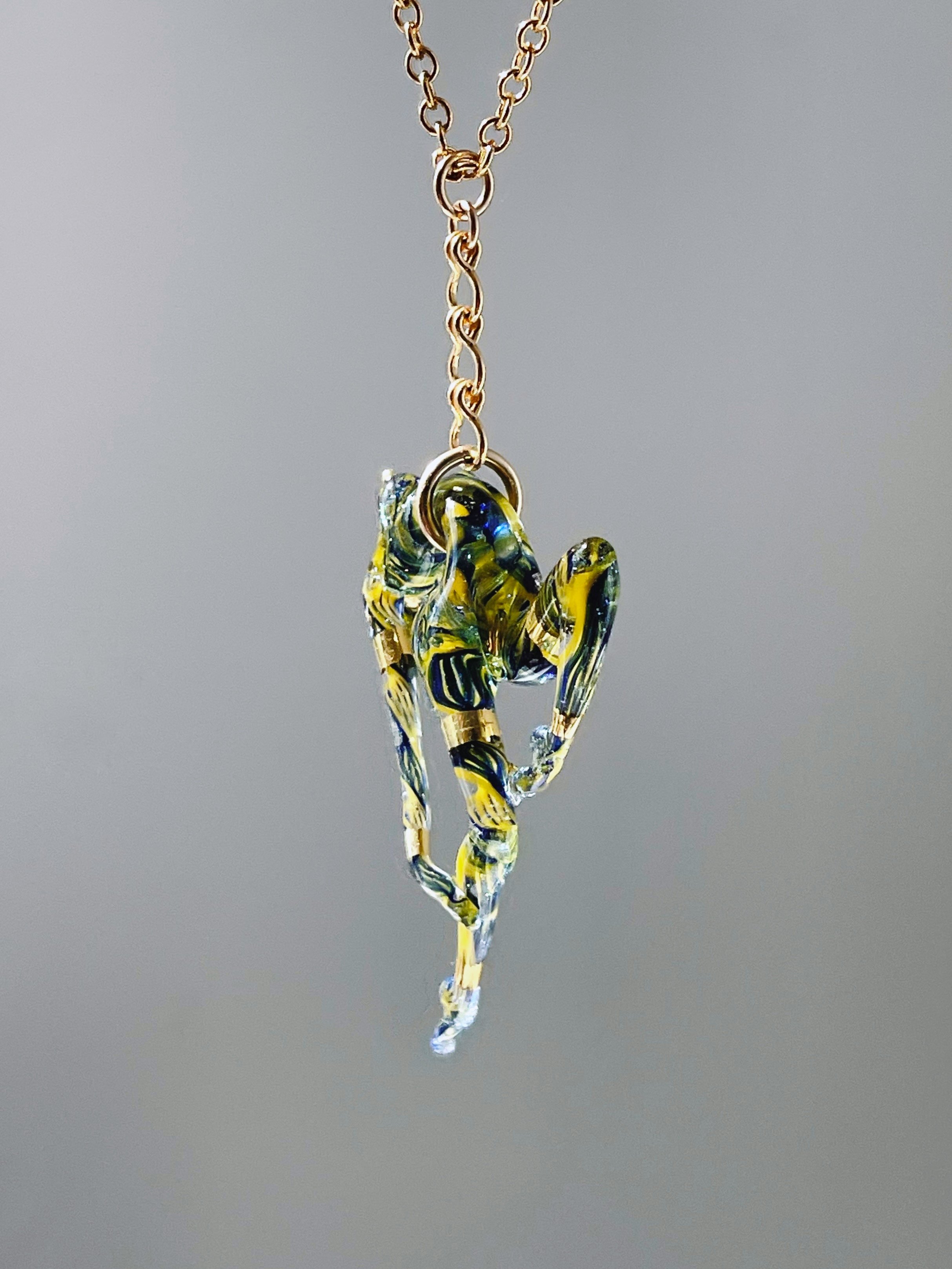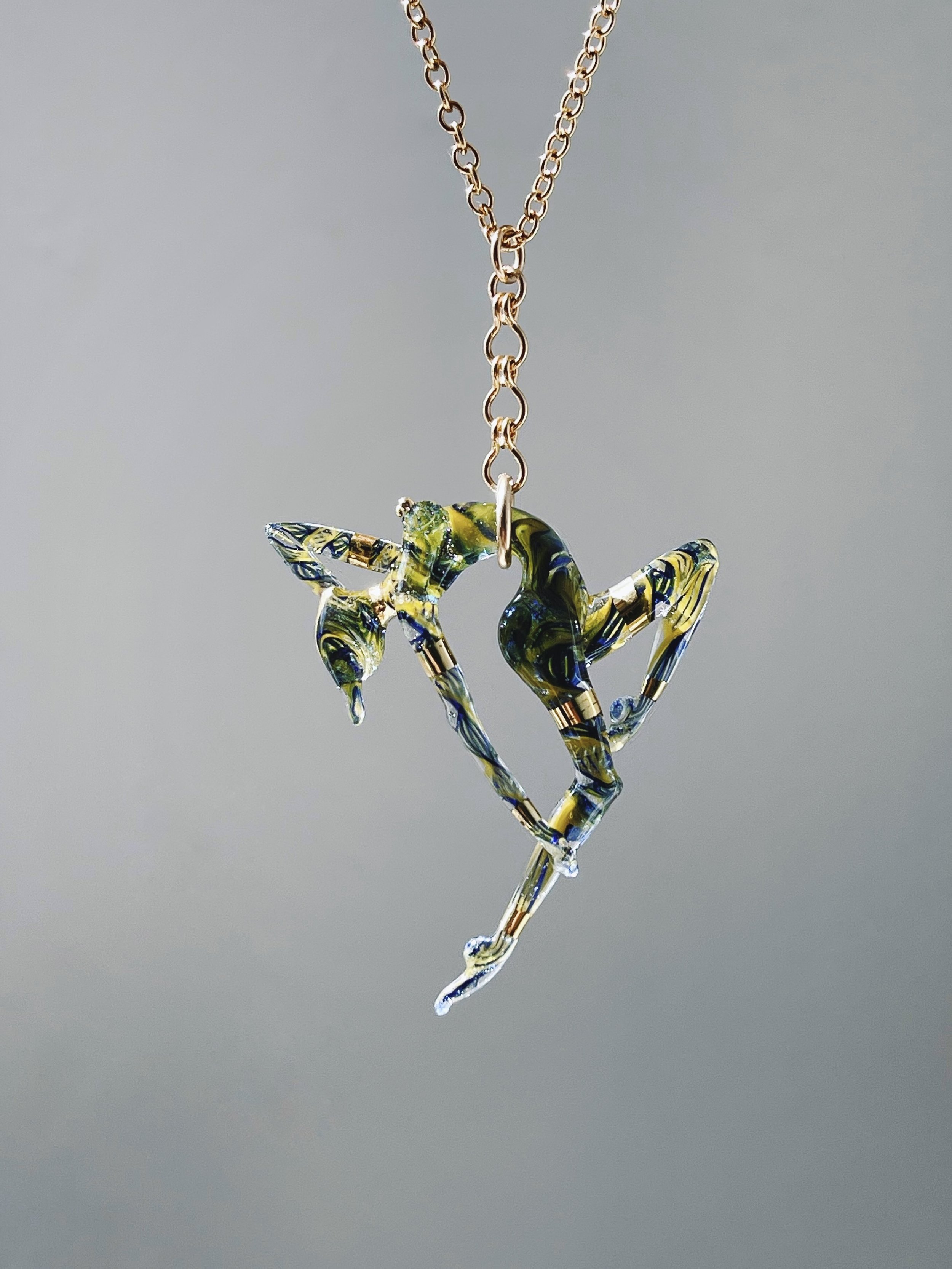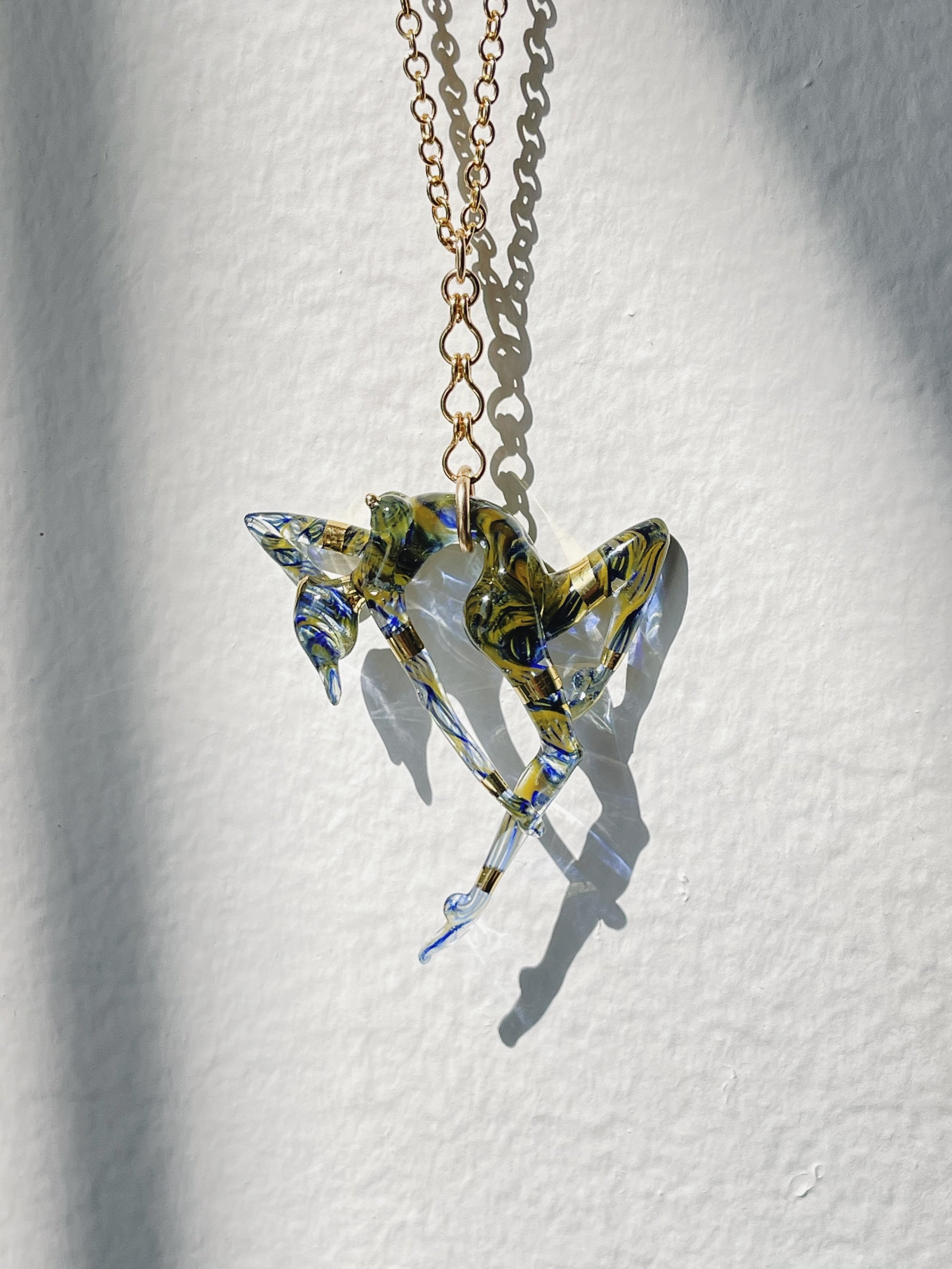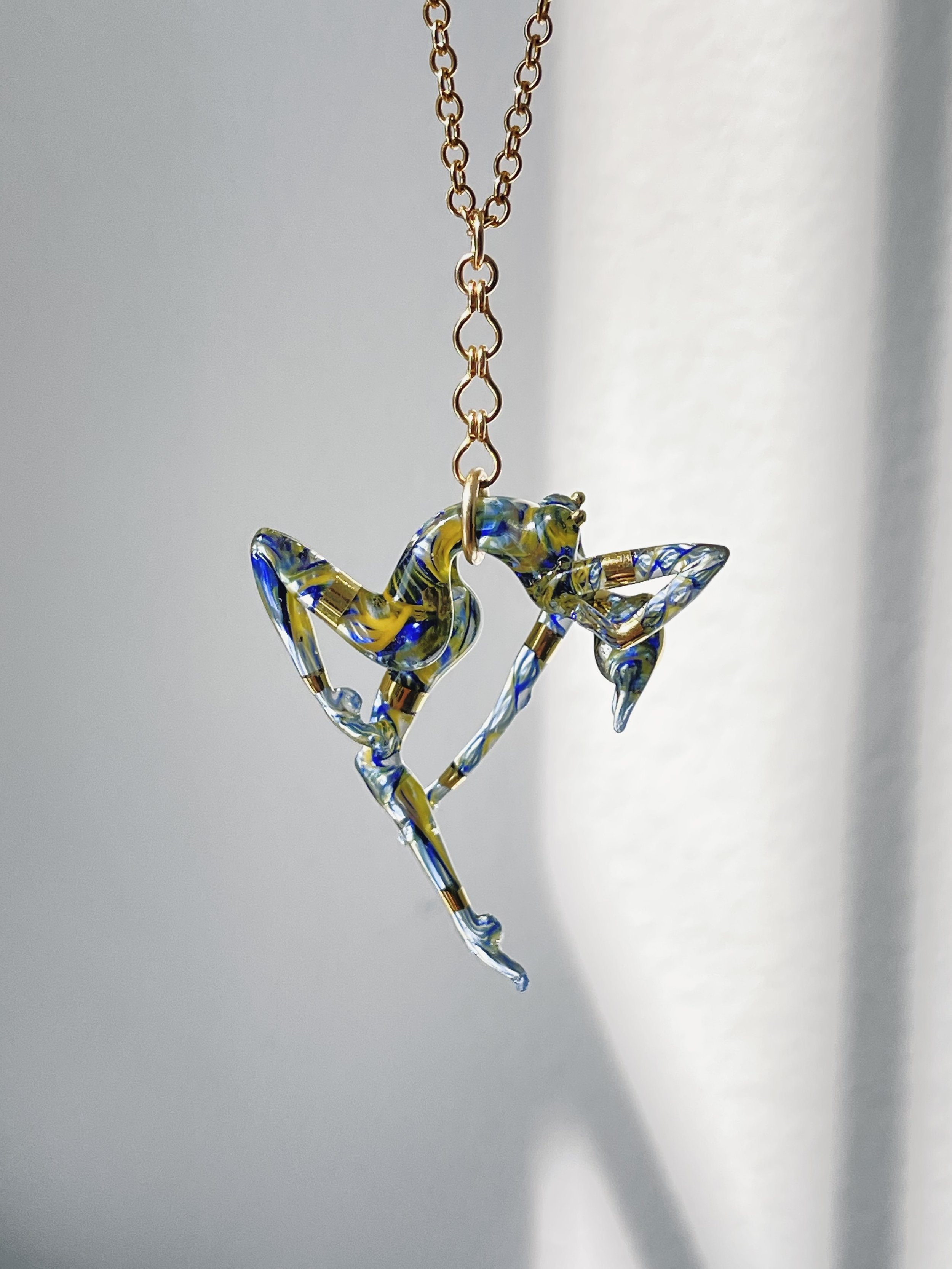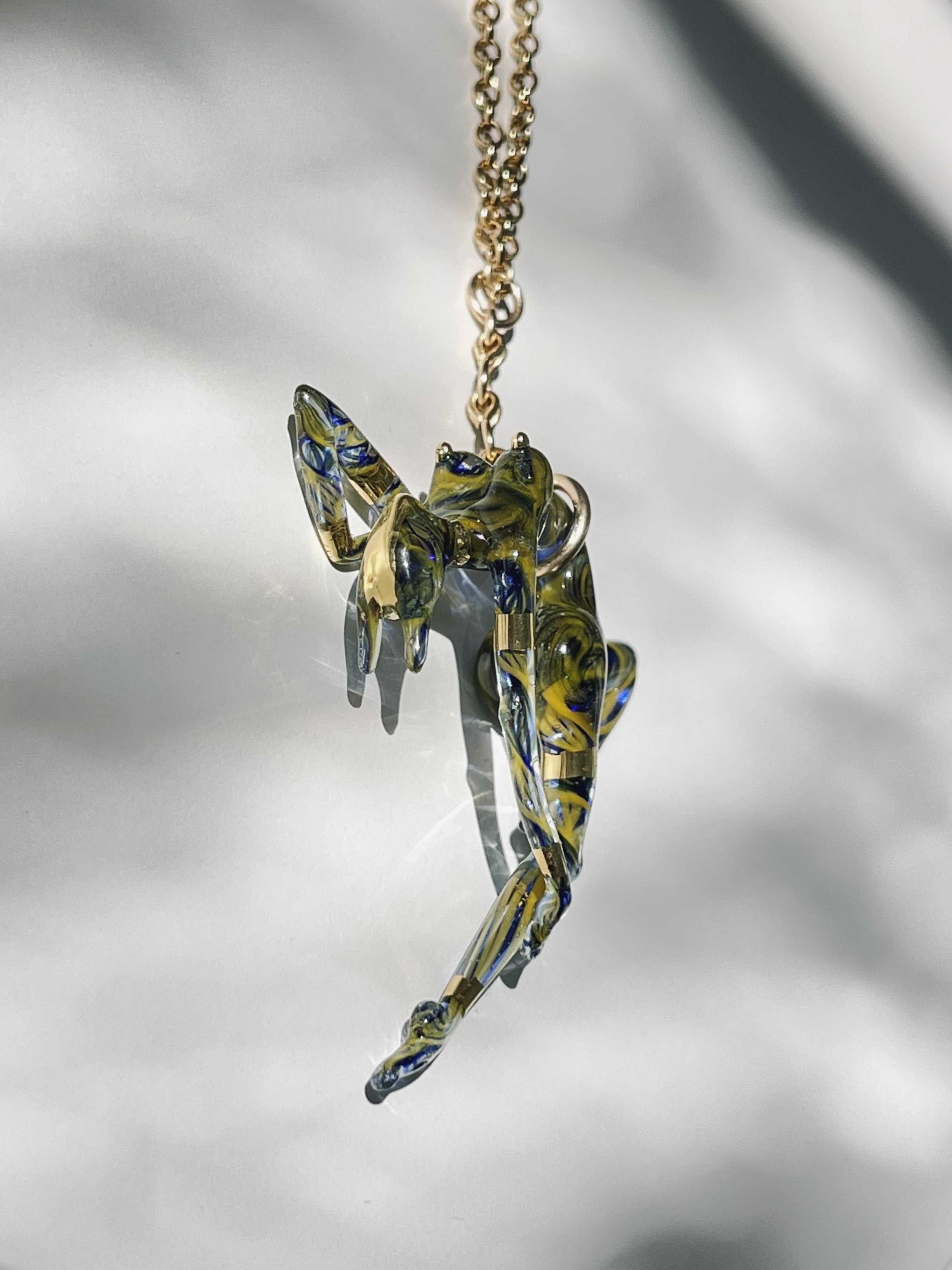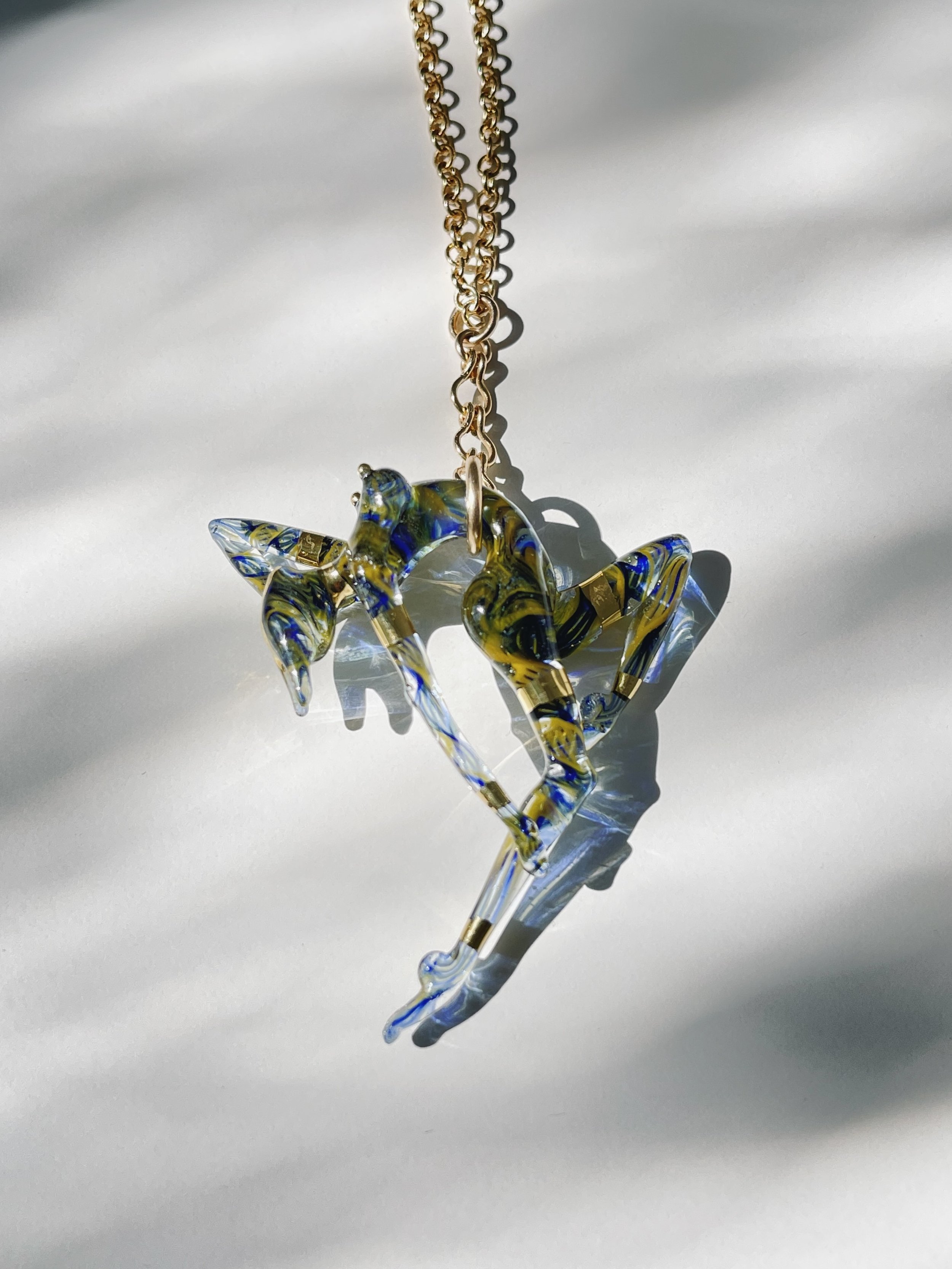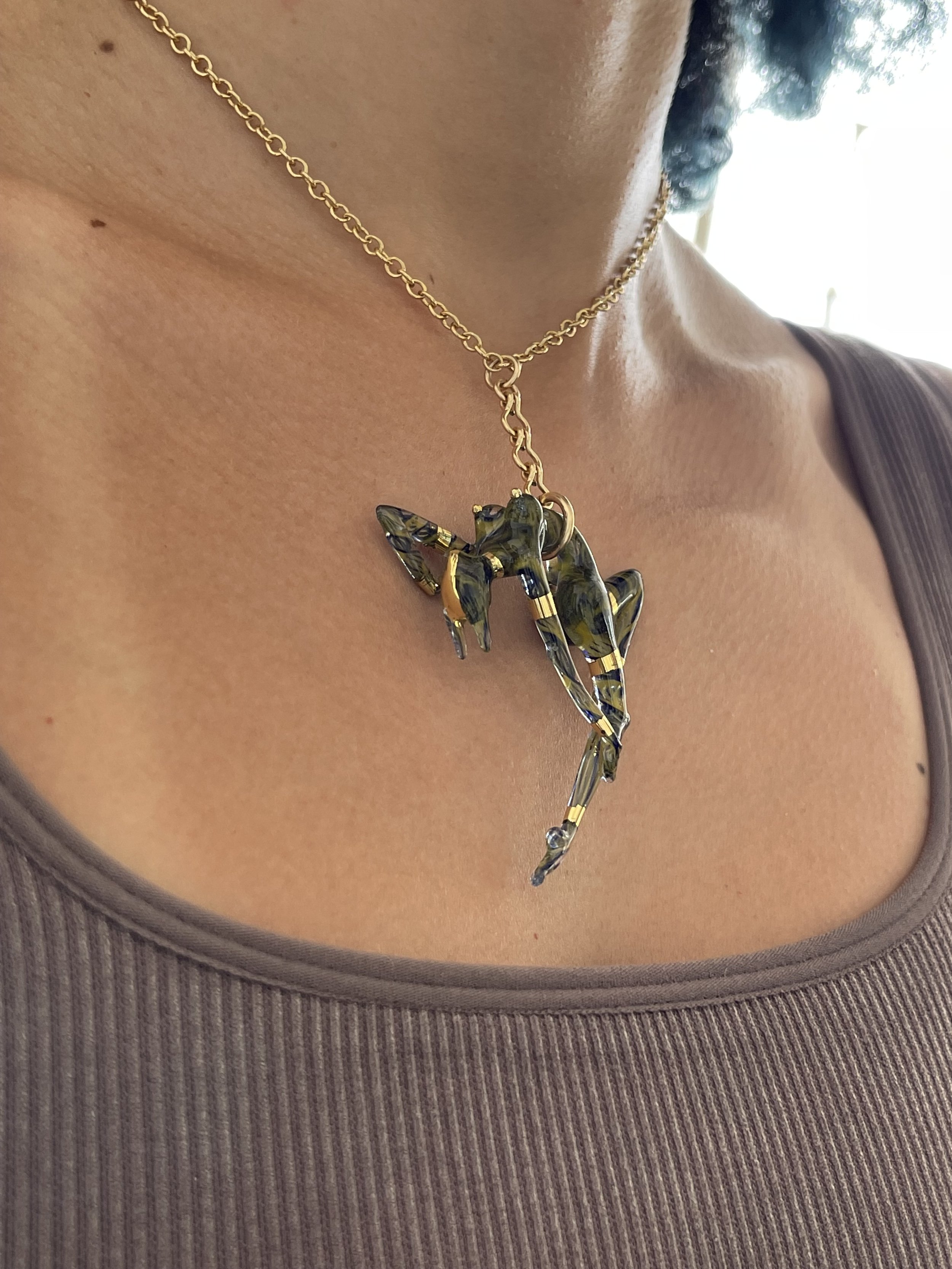Sybelley committed to lampworking and it certainly paid off
All photos by @Sibelley
If you are following the work of female lampworkers you have probably heard of Sibelley aka @sibelley . Her work is instantly recognizable. There is an element of weightlessness and physical form which one can only achieve if they are intimately familiar with the physics of these postures. As in having done them a whole lot type of familiarity. Sibelley is an accomplished athlete, photographer, visual artist, someone capable of drawing inspiration from many places and turning feelings and movement into glass. She was kind enough to sit down with us for an interview and she made a few outstanding pieced which you can see in the gallery below.
What kind of music do you listen to when you make art?
‘…When I really want to keep the fire burning, I listen to the most obnoxious, noisy dance music, usually with deep tones and beats - not everyone’s cup of tea.’
What drove you to work with glass and specifically lamp work? Why not pottery or woodcarving?
I originally discovered glass while I was finishing my Illustration degree at VCU. My department required us to take an art class in a different department, so I chose Intro to Glass Casting. The properties of glass were so unique, that in order to continue learning; I needed to commit to it as my second major. My first love was casting, but took hot shop and lampworking along the way. What really drove me to focus on flame-working, was the accessibility after school. I couldn’t afford a big kiln and all the materials involved to keep up with casting, so my uncle gave me his welding torch and encouraged me to continue with the tools I had.
Who would you say are your influences in modern art? Did you study with anyone?
My first mentor was Sayaka Suzuki, she pushed me in my glass journey from the beginning and I had a great time assisting her. The second artist I worked with was Uri Davillier of Neptune Glassworks. I worked with him when I moved to LA, and developed great skills under his wing.
What contemporary artists inspire you?
My favorite contemporaries are James Jean, Soey Milk, Damien Hirst, Hajime Sorayama, and Porous Walker
Your art is about motion, yoga, acrobatic movement and the female form. Tell us more about that. How challenging is it to capture these very fluid motions in a static form?
I have a natural interest in the human form, starting from childhood, so coming back to the body is very exciting to me. I’ve always been an observer along with having my own athletic practices. Starting with drawing from Japanese comic books as a kid to taking live model drawing classes in school, the athletic female body has always been my muse. Because of my longtime interest, it hasn’t been much of challenge to sculpt. The biggest challenge has been learning how to make glass do what I want, and I did that over time (a long time) with much stubborn practice and failure
What kind of music do you listen to when you make art, if any? Is there anything else that triggers the process of lighting your torch?
I love all kinds of music, but when I really want to keep the fire burning, I listen to the most obnoxious, noisy dance music, usually with deep tones and beats- not everyone’s cup of tea. I also love listening to audio books and podcasts to keep my mind activated while I do easy production work.
Do you do long sessions in the studio or do you work on pieces a little bit at a time? What do you think is better or ideal for you?
I go through different work phases. I have a bad habit of waiting till the last minute if there’s a show deadline or a client deadline, so I tend to work in big chunks and then take time off. The production work is consistent, so inevitably, I do a few days a week of that, but for the bigger work, I go hard. I usually have a flame of inspiration for personal projects, but if I take too long to create a dream piece, my fire burns out and the inspiration dies.
We just went to see the Frida Khalo exhibit at the Portland art museum. You can tell that her physical condition influenced a lot of her art and at the same time she triumphed over that to become one of the most successful artists of the 20th century. How do you think physical condition and art connect in your process?
My physical condition is one of the most important factors when it comes to working. I actually don’t know how it’s possible to be weak and flamework at a large scale. If I don’t feel strong and healthy, I can’t stand or even sit for long to work. On top of that, if I’m not capable of holding a piece steady and focused, nothing comes out right. It ends up being a waste of time. I must dedicate time to yoga and workouts in order to make refined glass products.
Tell us how your art fits in the contemporary reality of changing social and gender dynamics and in the present cultural moment?
I don’t think too much about what people or society expects me to make. Times will change, but I will continue to make what interests me. If someone commissions me to make a style of figure that isn’t my usual, I’m totally fine with that. There are plenty of artists in the world that can make work that speaks to society’s varying expectations.
If you had to sail across the Pacific and you could take only 3 things that are related to your art with you, what would they be?
Gold luster, yoga mat, Japanese manga
